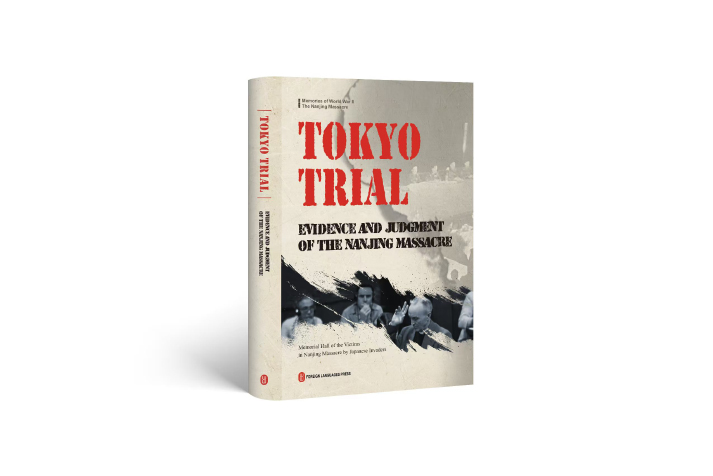| Voice |
| From atrocity to accountability | |
|
|
 Tokyo Trial: Evidence and Judgment of the Nanjing Massacre (COURTESY PHOTO)
The publication of Tokyo Trial: Evidence and Judgment of the Nanjing Massacre by the Foreign Languages Press in September is very timely. It has particular relevance in today's global context, marked by increasing armed conflicts, growing tensions between countries and numerous situations of ethnic and religious persecution. The Nanjing Massacre of winter 1937-38 committed by the Japanese invaders included the killing of more than 300,000 Chinese civilians and unarmed soldiers, the rape of tens of thousands of women, the torture of detainees and the looting and plundering of the population's material goods. Chinese society and its government have always honored the memory of the victims and demanded justice. However, in much of the West, this barbarity committed by the Japanese armed forces remains little known. One of the aspects of the massacre that has not been sufficiently disseminated is the role played by the Tokyo Trial, particularly in achieving justice and punishing those politically and militarily responsible for the massacre, as well as those who failed to act to prevent it. Reading the testimonies and reports presented in the book raises awareness of the dehumanizing way in which the Japanese military acted. The eyewitness accounts are particularly heartbreaking. They enable the reader to approach the massacre not only as an observer, but also as someone who emotionally feels the victims' pain and shares the conviction that such testimonies must never be forgotten, but passed down from generation to generation, so that atrocities like those described are never repeated. This is equally true of all of the testimonies, including the accounts of the repeated sexual violence suffered by the women of Nanjing. As in other cases of genocide, in Nanjing, women became the main targets chosen by soldiers in their attacks on defenseless civilian populations. One of the particular characteristics of the Nanjing Massacre was that the selection of victims by the Japanese soldiers was completely random. With few exceptions, there was no military reason for deciding whom to arrest or kill. No one was safe. This pattern of indiscriminate killings created an atmosphere of terror throughout the population, with the aim of paralyzing their ability to organize any form of response. Unlike the Holocaust, it was not a bureaucratized genocide, precisely planned with state or military command structures. The book shows that, in this case, it was a chaotic massacre, a mass killing, encouraged—or at least tolerated—by the high command. This is why the testimonies and reports presented at the trial were so important in providing overwhelming evidence that allowed the guilty to be condemned. Those testimonies about their role in the Nanjing Massacre became a key reference and central evidence for the tribunal to establish the responsibility of military leaders such as Iwane Matsui and political officials like Koki Hirota—both sentenced to death—for the systematic atrocities committed over several weeks against the civilian population and prisoners of war. Undoubtedly, the book is a major contribution to preventing attempts to deny or downplay the massacre. At the same time, it is a tool to reclaim the humanity and dignity of the victims. By recounting the atrocities and cruelty inflicted on the civilian population, it preserves memory as an act of moral justice and prevents being forgotten from becoming a second death. At the same time, it restores the voices of those who were silenced by violence. If Nanjing shows us that barbarity is possible, then its memory must become an antidote against its repetition. BR The author is a former minister of science, technology and innovation of Argentina Copyedited by G.P. Wilson Comments to linan@cicgamericas.com |
|
||||||||||||||||||||||||||||||
|